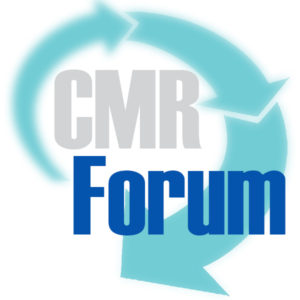It’s OK to quit your funk.
By Carol Terracina Hartman
Managing Editor for News
As we conduct all the end-of-semester rituals – filing grades, archiving editions, announcing a new slate of editors, hosting our awards banquets, and eventually, clearing off at least one corner of a desk, it’s time to close the chapter on Spring Semester 2020.
 Now summer break prep begins: pull out that list of goals from last August and see what was accomplished, what was diverted, what needs reviewing, and what can be tackled over the summer break – research, training, intern development, conference attendance or presentation, tech purchases, check check check.
Now summer break prep begins: pull out that list of goals from last August and see what was accomplished, what was diverted, what needs reviewing, and what can be tackled over the summer break – research, training, intern development, conference attendance or presentation, tech purchases, check check check.
But wait! That scenario sounds like a past life: Isn’t this what we do when not sheltering at home, teaching remotely, donning masks to go to the market or laundromat, learning how to produce and deliver news in all digital to a terrified readership.
Life is just too uncertain; why pretend everything we knew about life hasn’t changed? Isn’t it best to just wait and see than try to plan and prepare?
Maybe, just maybe, it’s OK to quit your funk.
Nothing about the spring semester wasn’t traumatic; even clicking the final ‘submit’ on sending grades for the last class failed to generate joy for many faculty; instead, it generated uncertainty and trauma: “Did I do enough for them? are they OK? How will they do in the course sequence? I coulda have done more, shoulda tried harder, shoulda developed more resources!”
That right there is reason enough to quit your funk.
Use that leftover trauma coloring the summer session and fall semester with uncertainty to build a contingency plan: stare it in the face. Every geographic region has its Achilles weather heel – hurricane, wildfire, bomb cycle, Polar vortex – and every fall conference, we hear from student staffs how they weathered their particular storm and kept reporting. Some of those extreme weather events have seasons; operations manuals have plans for those seasons.
But whose operations manual includes a shutdown, a pandemic, a contagion? [please, pat yourself on the back if yours does and present at CMA!] Many student media outlets wrestled with administrations, fighting to keep publishing as both academic and student affairs struggled with a clear path forward. Not being together, distractions and obstacles at ‘home,’ and access all offered additional challenges. Clearly, policy and procedures, with feedback from an advisory board, would help.
So here’s a Top Tips List to Quit Your Funk by facing it, acknowledging not only the need for a little debriefing but also acknowledging the possibility of No End in Sight (at presstime).
- Update the Ops Manual: State policy for operating during a pandemic shutdown. If the manual already addresses emergency conditions, such as extreme weather, differentiate between orders from various entities, such as national, state, local and campus-imposed restrictions.
- Review technology portability: If a staff chooses to go remote, realistically, how possible is it? Develop a survey to review staff needs in terms of bandwidth, devices, and other equipment. Review software compatibility between home systems. If possible, research options for checking out laptops and iPads and detail those procedures.
- Chart the production flow: from start to finish, begin with specific check-in times – not only for progress, but device maintenance check-ins and ‘soul’ check-ins. Taking time to make sure people are coping and they are not struggling with their is never a bad decision. Develop one for on-campus and for remote production.
- Post a graphic with the production flow on your chosen platform, whether it be Slack or Discord. Make sure everyone knows their role, their time and who to contact with questions. Agree on best contact method [text, Messenger, etc.]
- Prepare for Election 2020 coverage. This election season presents lots of opportunities for in-depth reporting, from new voting machines, mail-in legislation and absentee requests, format of nominating party conventions, candidate debates as well as the issues pertinent to college-age audience (student loans, ACT / SAT requirements, paid athletes, changes to Title IX reporting, and more).
- Update the press kit. If student media isn’t convergent, doing so through advertising during a presidential campaign is a smooth way to launch. A campaign contacts an ad rep at the newspaper and, by arrangement, the rep can say, “for 10 % more, we can air your ad on 91.7 WCUP FM.”
- Build that Creative Services Agency! While ad clients may request graphic services during a special campaign, such as Homecoming or Graduation, actively seeking graphics clients for every edition can drive revenue. Consider hiring a graphic designer alongside the graphics editor and develop a business plan that first focuses on campaign services. Local candidates often walk in with a business card, planning to order a 2×2 ad. That’s the ideal candidate for Creative Services.
Facing the source of “the funk” that might hang around after surviving an unusual and downright nerve-wracking semester might be the perfect balance between taking advantage of some unscheduled time during the summer break and acknowledging the uncertainty of not knowing what teaching or advising is going to look like.
A good first step is registering for the CMA Zoom Happy Hour on May 28, 5 p.m. CST. See you there!
